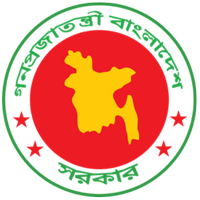রোহিঙ্গা ক্যাম্পে শিশুদের টিকাদানে চ্যালেঞ্জ ও সম্ভাবনা: সচেতনতা ও টিকাদানের প্রতি আস্থা তৈরি করাই প্রধান চাবিকাঠি

বাংলাদেশের বৃহত্তম রোহিঙ্গা শিবিরে প্রায় ৯ লাখ রোহিঙ্গা শরণার্থী টিকা-প্রতিরোধযোগ্য রোগের ঝুঁকিতে রয়েছে। টিকাদান কার্যক্রম চালু থাকলেও অনেক শিশু এখনও টিকার আওতার বাইরে। এ পরিস্থিতিতে, টিকাদানের অন্তরায় এবং চালিকাশক্তিগুলো চিহ্নিত করা গুরুত্বপূর্ণ। স্বাস্থ্য সেবা প্রদানকারীদের অভিজ্ঞতার ভিত্তিতে একটি সাম্প্রতিক গবেষণায় এই বিষয়টি বিশদভাবে বিশ্লেষণ করা হয়েছে।
গবেষণাটি Capability-Opportunity-Motivation-Behavior (COM-B) মডেল ব্যবহার করে পরিচালিত হয়। এতে রোহিঙ্গা ক্যাম্পগুলোর উচ্চ এবং নিম্ন টিকাদান কাভারেজের এলাকা থেকে স্বাস্থ্যকর্মীদের নিয়ে আটটি ফোকাস গ্রুপ আলোচনা (FGDs) এবং সরকারি ও এনজিও কর্মকর্তাদের সঙ্গে ১১টি গভীর সাক্ষাৎকার (IDIs) অন্তর্ভুক্ত ছিল।
স্বাস্থ্যকর্মীদের জ্ঞান ও যোগাযোগ দক্ষতা টিকাদানের ক্ষেত্রে প্রভাব ফেলছে। উচ্চ কাভারেজ এলাকাগুলোর টিকাদানকারীরা টিকার পরিসংখ্যান সম্পর্কে ভালো ধারণা রাখেন। বিপরীতে, নিম্ন কাভারেজের এলাকায় এ ধরনের তথ্যের অভাব দেখা যায়। যদিও অধিকাংশ স্বাস্থ্যকর্মী টিকাদানের গুরুত্ব বোঝেন, উচ্চ কাভারেজ ক্যাম্পের কর্মীরা টিকার প্রয়োজনীয়তা ও রোগ প্রতিরোধের বিষয়গুলো সম্পর্কে আরও নির্দিষ্ট তথ্য দিতে সক্ষম।
গবেষণায় কয়েকটি কাঠামোগত সমস্যার কথা উঠে আসে। টিকা সরবরাহ পর্যাপ্ত থাকলেও কখনও কখনও ক্যাম্পেইন-পরবর্তী ঘাটতির কথা বলা হয়েছে। স্বাস্থ্যকর্মীদের উচ্চ পরিমাণে কাজের চাপ, কঠিন পরিবেশ, এবং বেতন অনিয়মের বিষয়গুলো তাদের কাজে বাধা সৃষ্টি করছে।
টিকাদান কার্ডের ব্যবহারে অসঙ্গতি একটি বড় চ্যালেঞ্জ। অনেক অভিভাবক কার্ড হারিয়ে ফেলেন, ফলে শিশুদের টিকার তারিখ মিস হয়ে যায়। স্বাস্থ্যকর্মীরা বাড়ি বাড়ি গিয়ে অভিভাবকদের সচেতন করার চেষ্টা করেন, তবে দূরত্ব ও দুর্গম এলাকার কারণে অনেকেই টিকাদান কেন্দ্রে পৌঁছাতে পারেন না।
এছাড়া, অভ্যন্তরীণ সমন্বয়ের ঘাটতি বিশেষ করে নিম্ন কাভারেজ ক্যাম্পে টিকাদানের ক্ষেত্রে বাধা হয়ে দাঁড়ায়। স্থানীয় নেতা যেমন মজী (ব্লক নেতা), ইমাম, এবং ক্যাম্প-ইন-চার্জের ভূমিকাকে টিকাদানে অত্যন্ত গুরুত্বপূর্ণ বলে চিহ্নিত করা হয়েছে।
গবেষণাটি দেখিয়েছে যে, রোহিঙ্গা ক্যাম্পে টিকাদানের কাভারেজ বাড়াতে স্বাস্থ্যকর্মীদের দক্ষতা উন্নয়ন, সমন্বয় বৃদ্ধি, এবং প্রণোদনা ব্যবহার করতে হবে। পাশাপাশি, অভিভাবকদের বিশ্বাসঘাটতির বিষয়টি মোকাবিলা করার জন্য তাদের সামাজিক ও ঐতিহাসিক প্রেক্ষাপট বিবেচনায় নিয়ে বিশেষ প্রচারণা চালাতে হবে।
Reference:
Reda S, Weishaar H, Akhter S, Karo B, Martínez J, Singh A, et al. Health service providers’ views on barriers and drivers to childhood vaccination of FDMN/Rohingya refugees: a qualitative study in Cox’s Bazar, Bangladesh. Frontiers in Public Health [Internet]. 2024 Jul 9;12. Available from: https://doi.org/10.3389/fpubh.2024.1359082









